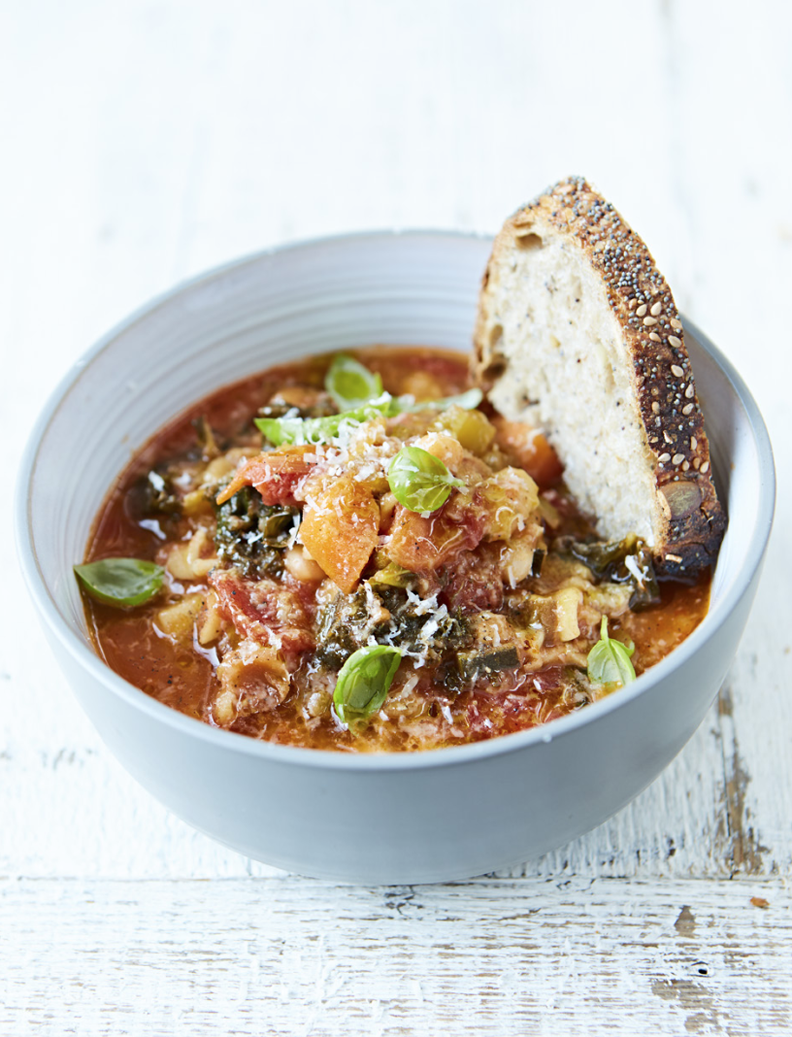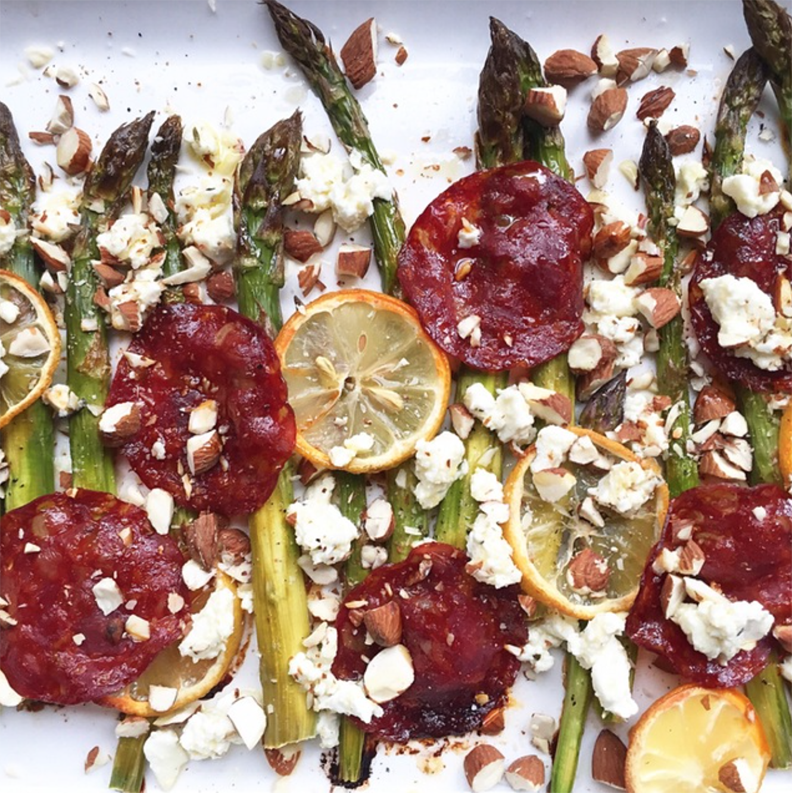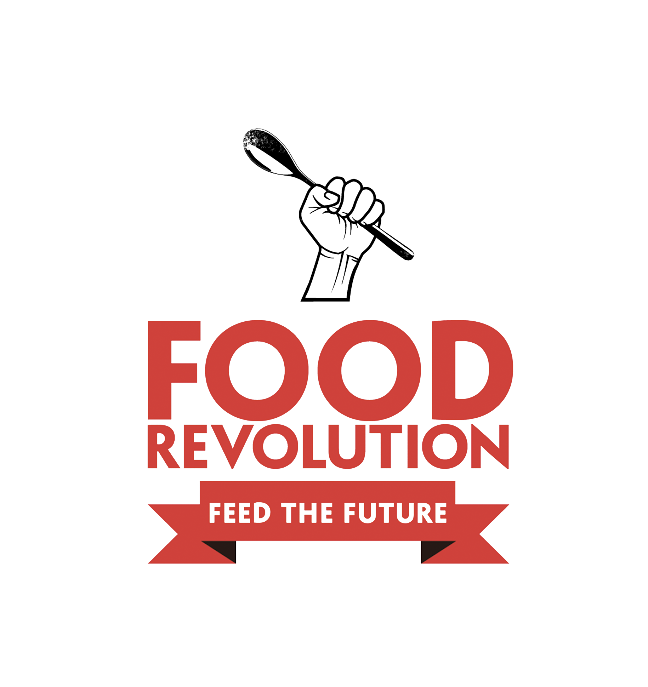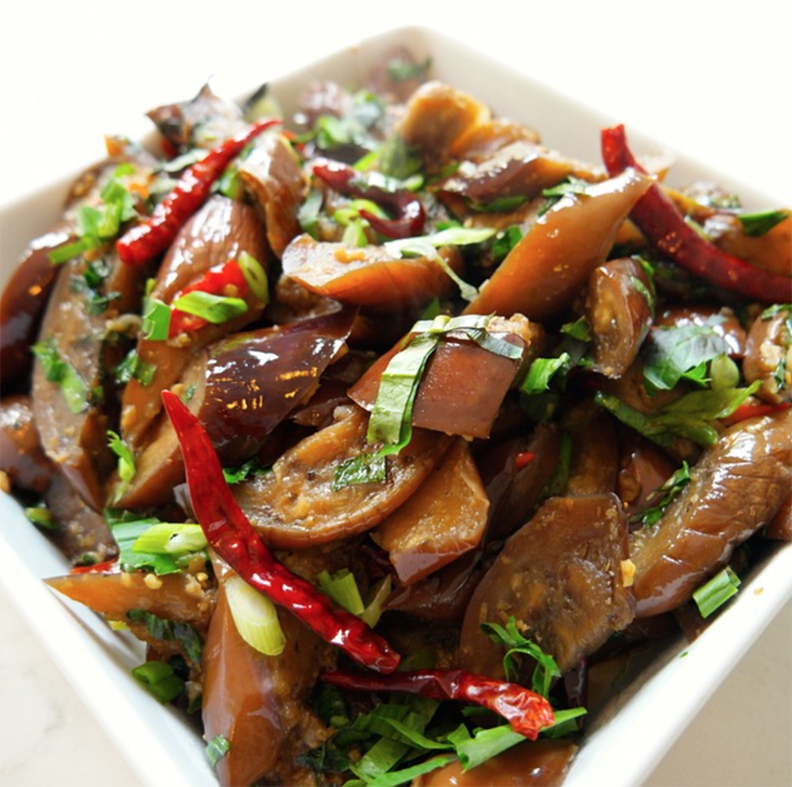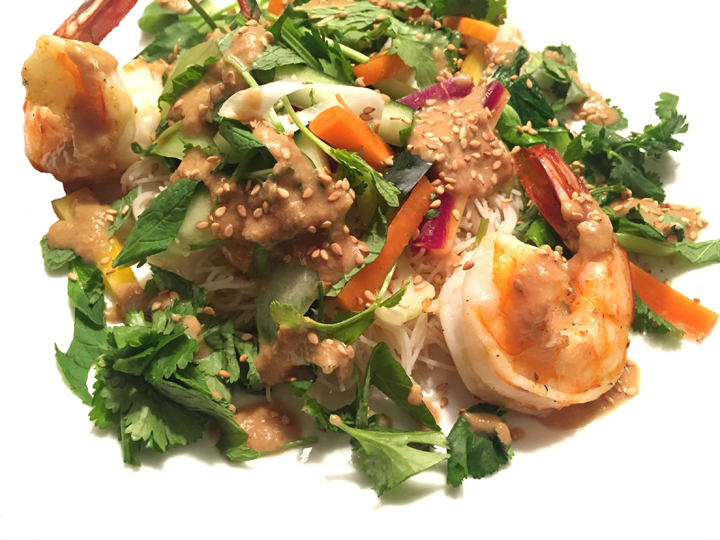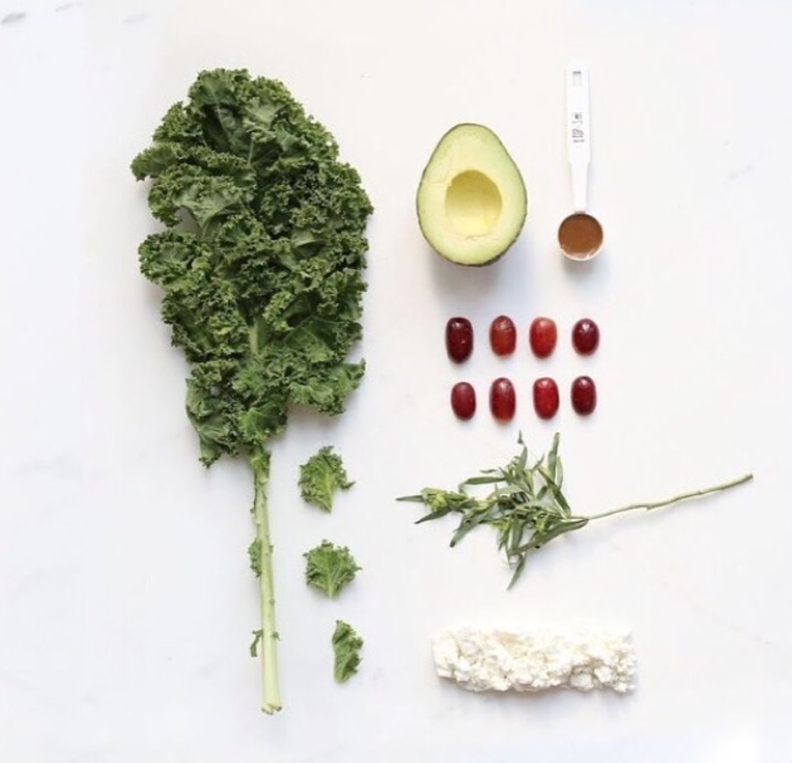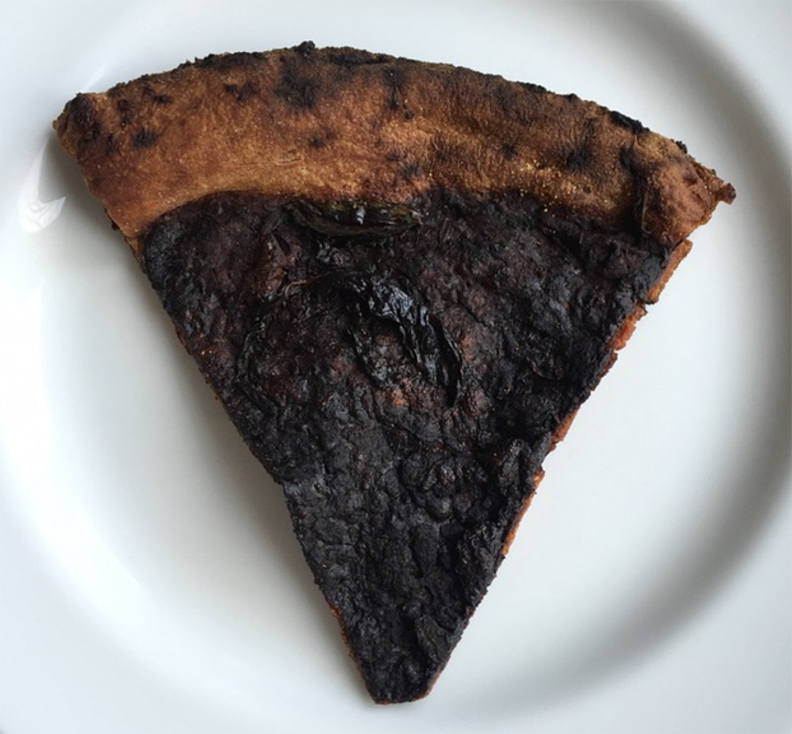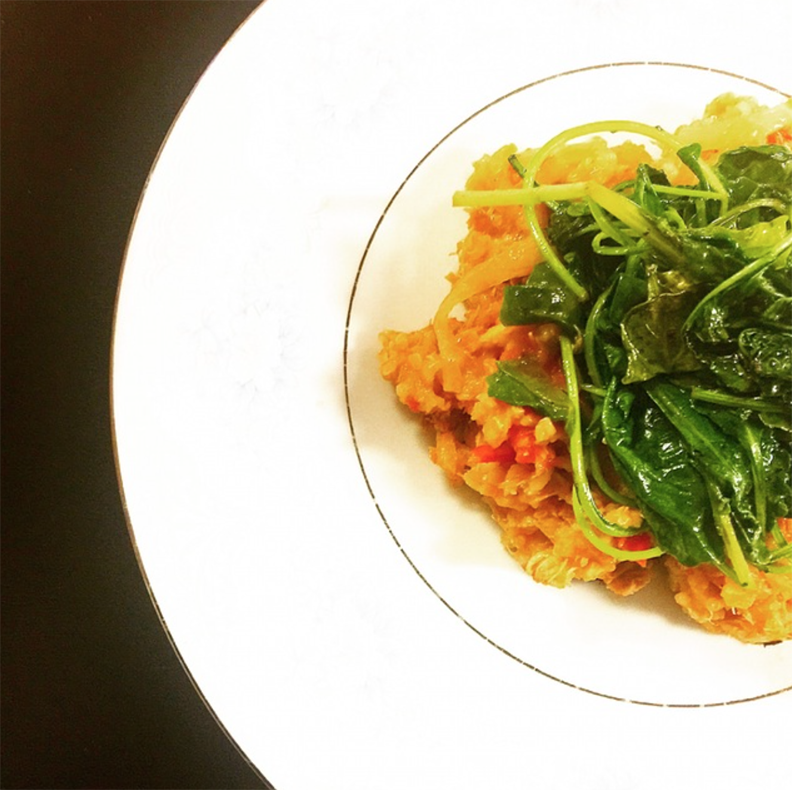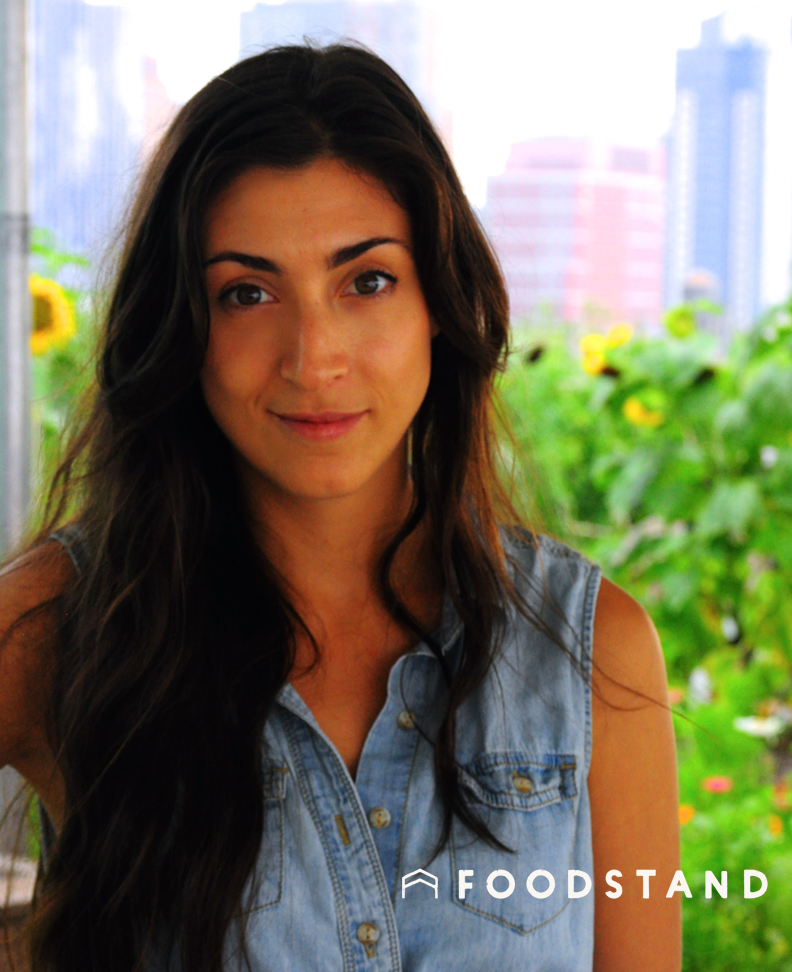
Anastasia Cole Plakias, Co-Founder of Brooklyn Grange Rooftop Farms (@brooklyngrange) and author of The Farm on the Roof, lives and breathes urban, sustainable farming. She’s the ultimate inspiration for Earth Day! What was once a dream is now the world’s largest rooftop soil farm, and her book tells the story.
Join us Monday, April 25th at 6pm at Brooklyn FoodWorks to meet Anastasia in person at Foodstand’s Food Book & Film Club. Anastasia will present a short reading from The Farm on the Roof before answering your questions. We will also feature a short film screening of Brooklyn Farmer—the night will revolve around what it means to run a small food business in New York, with a special emphasis on maintaining one’s values as business grows. Be sure to use promo code GRANGE at checkout for $5 off. Here’s Anastasia to whet your palate.
For those just getting to know you, how would you describe Brooklyn Grange?
Brooklyn Grange is a triple bottom line rooftop farming business. We grow over 50,000 lbs of organically-cultivated produce per year on two rooftops spanning 2.5 acres. Brooklyn Grange also hosts events from educational farming workshops, to product launches, and weddings; and provides urban farming and green roof consulting and installation services to clients worldwide. We also partner with numerous non-profit organizations throughout New York to promote healthy and strong local communities.
Are there any personal beliefs that you have on the overall food system that make their way into your everyday business (e.g., curbing food waste, sustainable sourcing, local sourcing)? Do tell.
If anything, the farm’s mission has made its way into my every day life! I really don’t waste anything anymore. I see how hard our farmers work to grow the beautiful food we harvest, so when I bring it home, I use every last bit of it. After taking the leaves off a sprig of thyme, I’ll save the stem and stick it in a pot along with other scraps for veggie stock. What I don’t eat, I compost. It’s not unusual to see me bicycling along the East River greenway to the farm in the morning with a bunch of dead flowers and some watermelon rinds overflowing from the compost bin in my basket.
What’s one of your first (and most memorable) interactions with food?
Every summer, I make my mom’s Pasta alla Cecche recipe and it brings me back to squishing just-blanched, farm fresh tomatoes between my fingers as a kid—the sweet-tart fragrance mingling with the spicy perfume of fresh basil and pungent raw garlic in a big bowl on the counter of our tiny galley kitchen. I am forever grateful to my parents for raising me with a reverence for quality ingredients and a passion for preparing them.
What’s your favorite meal-on-the-go: What do you make or where do you buy it?
I’m a native New Yorker, so a good slice of pizza will always hit the spot. It’s in my DNA. I love throwing handfuls of fresh basil, arugula, hot chilis, and thick slices of ripe tomato from the farm on a piping hot piece of cheese pizza. Nothing like it in the world.
Are you making a food resolution this year?
My partner and I have decided to start bringing our own food containers with us when we go out to eat in case we need to bring leftovers home! We’re tired of recycling take-out boxes. It’s just too much packaging.
What’s the most rewarding aspect of Brooklyn Grange?
Without a doubt, the most rewarding aspect of Brooklyn Grange is the community that has come together around the farm. Our team is made up of the most incredible individuals, and not a day goes by that I don’t learn something new from one of my colleagues. And it’s not just the Brooklyn Grange team that inspires me—the network of organizations with whom we partner to engage a wider segment of the community has become essential to our company culture. When I see City Growers, our sister non-profit organization, bringing a group of NYC public school youth to the roof, I cannot help but harken back to my days as a NYC public school student, and I’m so glad that these kids have an opportunity to experience the world of possibility just above their sight-lines. And they’re not the only ones—Refugee Immigrant Fund, which brings asylum-seekers to our farm for training and community-building, has introduced us to some of the most incredible individuals I’ve ever met who have really changed the way I think about my daily life. I don’t take things for granted as I once did. To that end, I should admit that the second most rewarding aspect of Brooklyn Grange are those moments I find myself alone on the farm. Maybe I’m working late and duck out of the office to harvest a few things for dinner before the sun sets—the rest of the city is a million miles away. The birds are swooping into the cucumber vines to snatch up beetles, or are happily pecking away at the face of a sunflower, and a row of baby mustard greens catches the last light in a dazzling shimmer. It’s magic, and in those moments I feel like the luckiest lady on earth.
WANT TO BE FEATURED ON BEHIND THE PLATE?
DOWNLOAD THE FOODSTAND APP!
Your new book The Farm on the Roof tells about entrepreneurship, community, and growing a sustainable business. What inspired you to write it?
I feel strongly that when you innovate—when you start a project as unprecedented as ours—you are obligated to a certain level of transparency, and to share the lessons you’ve learned with the wider world. To that end, our policy at Brooklyn Grange is that we answer every single message we receive, and doing so has meant spending many, many hours at a computer or on the phone, having conversations with academic researchers, fellow farmers, policy makers, journalists, architects and designers, and the merely curious. It occurred to us that organizing all those conversations in one place might be useful to folks. I also personally really want to make a case for small businesses!
What was your biggest challenge writing the book?
It was just a really challenging process through and through. Balancing my other duties with a rigorous writing schedule wasn’t always easy. At the time, Brooklyn Grange’s offices were just a tiny little room that the whole staff shared (we’ve since moved into much more spacious digs) so I mostly wrote from home, or the coffee shops of northern Greenpoint, near my apartment. Staying connected to the subject matter—the farm—while being so removed from it was difficult at times.
Food issues have barely made it into the race for President. If you could ask the future President to consider a food issue that needs to be addressed, what would it be?
I know, right?! Thank you for pointing that out. It’s truly incredible that our candidates dedicate so much time to discussing healthcare and climate change but none on food and farming, by which the former are directly affected. There’s a lot to discuss when it comes to food, so it’s tough to even know where to begin, but I would almost certainly ask that they create a plan to move our farming systems towards greater independence from fossil fuels and corn-based foods.
If you could get the general population to change ONE aspect of their eating habits, what would it be?
I wish we’d eat fewer processed, packaged foods. When we eat real food, we eat less of it because it’s more expensive but also more nutritious and fills you up faster. And when we buy meat at the butcher or cheese at the cheesemonger, it should be wrapped in paper instead of sitting in a styrofoam boat or individually wrapped in plastic sheets which take energy to produce and never decompose. But we can’t ask people to pay more for food when healthcare is so expensive, and we can’t expect parents working multiple jobs and making a minimum wage that isn’t livable to spend time preparing and cooking whole foods when they get home at the end of a twelve hour day. So we have our work cut out for us before we can start making demands of our citizenry.
Who is one famous person, dead or alive, that you want to share a meal with? And where?
I’d invite Earl Butz, the Agriculture Secretary under Nixon and Ford who’s “get big or get out” model for America’s farmers was largely responsible for monocultures and the current corn-dominant diet that has lead to obesity and illness in so much of this country. I would like to meet him in one of the corn, soy, and cattle farming communities of America devoid of any place to buy fresh foods, and challenge him to source and cook us dinner.
If you weren’t doing what you’re doing, what would you be doing?
I would likely pursue a political career. I’m a pretty passionate advocate for that in which I believe strongly, and I think I can be pretty convincing.
What’s always in your fridge? What do you use it for?
There’s always a bin in my fridge collecting clippings and scraps from the food I prep: garlic and onion skins, ginger peels, carrot and fennel trimmings, old celery stalks. When the bin fills up, I toss everything with a drizzle of olive oil, salt, and peppercorns, and place it on a baking sheet in a 350 degree oven till it starts to fill the kitchen with its aroma, anywhere between 5 and 15 minutes. Then I scrape the whole mess into a pot, cover with water, and simmer for 30-45 minutes till I’ve got a stock. If I don’t need it right away, I freeze it in ice cube trays or tupperware to use later on in soups, risotto, or to cook grains like rye berries, einkorn, farro, or couscous.
How do you define good food?
I think good food is an extremely subjective concept. Trying to create a universal definition for it has gotten us into a lot of trouble: that’s how we’ve ended up with fad diets and snake oil supplements that often cause more anxiety and body image issues than health and well-being. But generally speaking, good food doesn’t cause harm to the people or ecosystem that produces it, and consuming it is both enjoyable and nourishing.
You’re not new to writing, having written for magazines in the past. How did writing your book differ from your previous experiences?
That’s a great question! In a lot of ways, the experiences were more alike than different. For example, The Farm on the Roof is less of an account of my own personal experiences as a co-founder, than it is the story—written primarily in first person plural—of an organization. Just as magazines have certain tones they like to strike with their readers, so too does Brooklyn Grange have a distinct voice and message of its own. And while I’ve definitely contributed to that voice and message as a co-founder and operator over the last six years, there were certain moments over the years that I undoubtedly experienced quite differently from my teammates. So, much like writing in the tone of a magazine, I tried to find the voice of Brooklyn Grange.
The best part about being in the food industry?
Being able to talk, think, write about, and play with food all the time!
Your good food wish?
I wish that access to clean, healthy, fair food was a right rather than a privilege.
BONUS: Favorite recipe.
Pasta all Cecche (pronounced in my house as “Pasta alla Kiki!”)
3 lbs large, red, ripe or slightly overripe tomatoes (about 6-8)
1 box high quality spaghetti, or the pasta of your choice!
3-4 cloves garlic
1 big bunch basil leaves
1/2 cup good quality olive oil
Pinch(es) chili flakes (optional)
Hard cheese for grating, such as Pecorino Romano, or Parmigiano-Reggiano
Salt
Bring a large pot of water to a boil and salt it liberally. How much salt? Well, as they say in Italy, that water should be “salty as the sea!”
When the water is boiling and salted, add the tomatoes and boil about 30 seconds, until the skins begin to peel back from the flesh. Use a wire mesh skimmer to gently lift the tomatoes out of the water and into a colander to drain. Cover the pot of water and bring down to a simmer.
While the tomatoes are cooling, set out a large ceramic or wood bowl. Peel the garlic cloves and use the side of a knife to smash them. Rub all over the inside of the bowl, then throw the whole cloves in and add the olive oil. Tear the basil leaves into small pieces and add those as well. If you are using chili flakes, throw those into the bowl too.
Bring the pot of water back to a full boil, and add your pasta, stirring. I like to set a timer for the lower cook time suggested on the package. It is very important that the pasta be al dente (a bit toothsome) because it will absorb some of the tomato water.
While the pasta is cooking, peel the tomatoes and use your hands to break them up into the bowl with the other ingredients, removing the core, or any hard bits around the stem, as you go. When the pasta is done, use tongs (or the wire mesh skimmer, if using a piece pasta) to lift it from the boiling water onto the tomatoes, bringing a bit of the pasta water with it. Let it sit for 2-3 minutes, steaming, before mixing it into the tomato-oil sauce. Let come to room temperature and serve garnished with grated cheese, and if you’re feeling super decadent, a piece of bread for fare la scarpetta!


